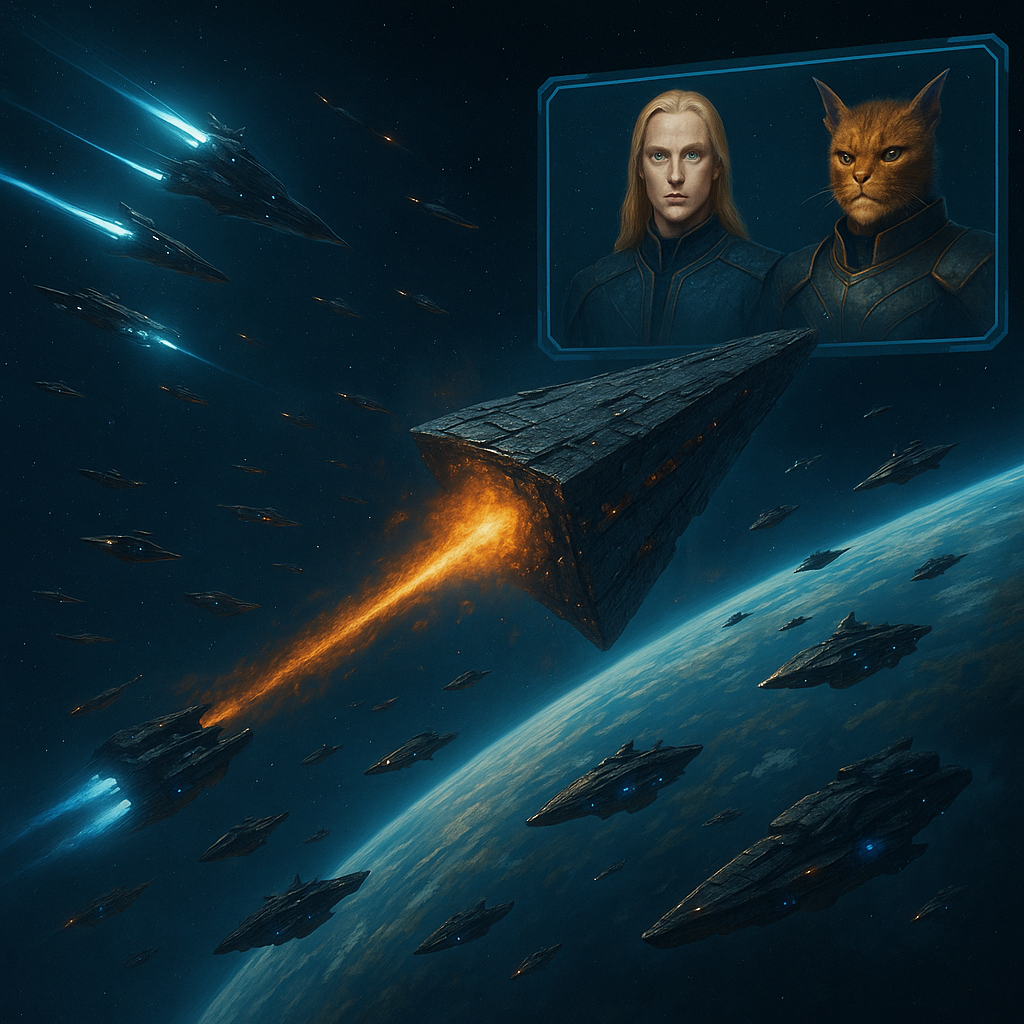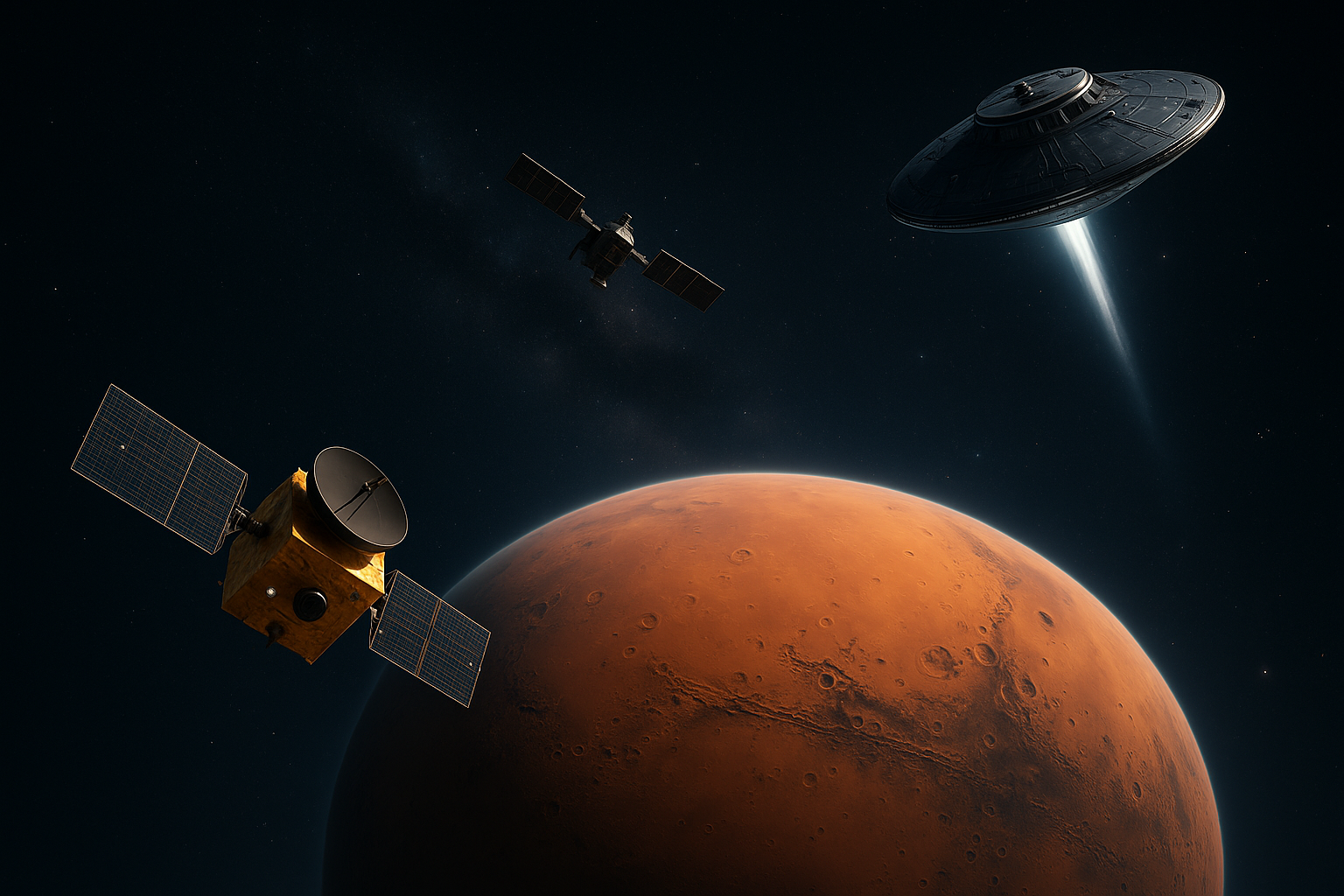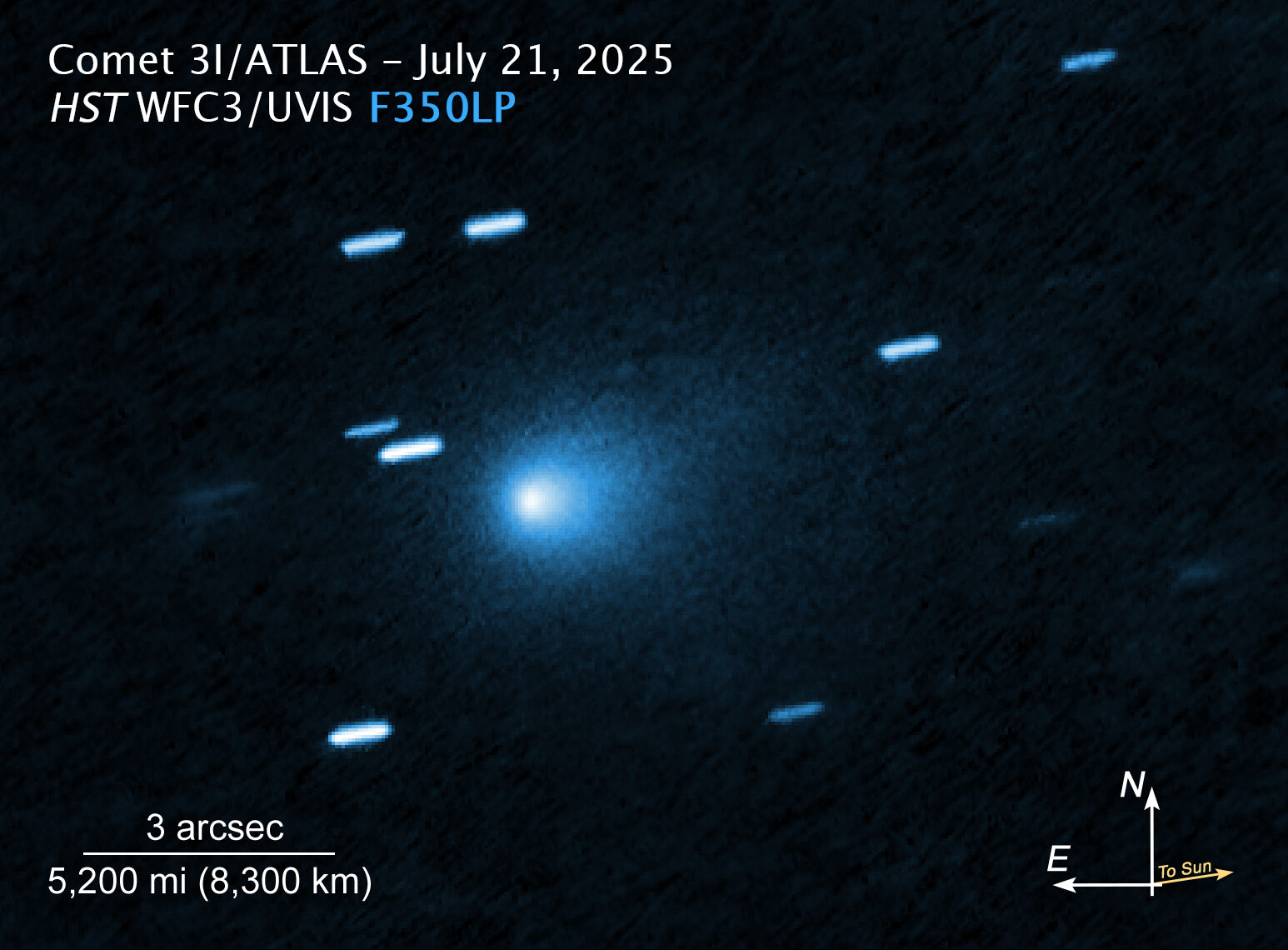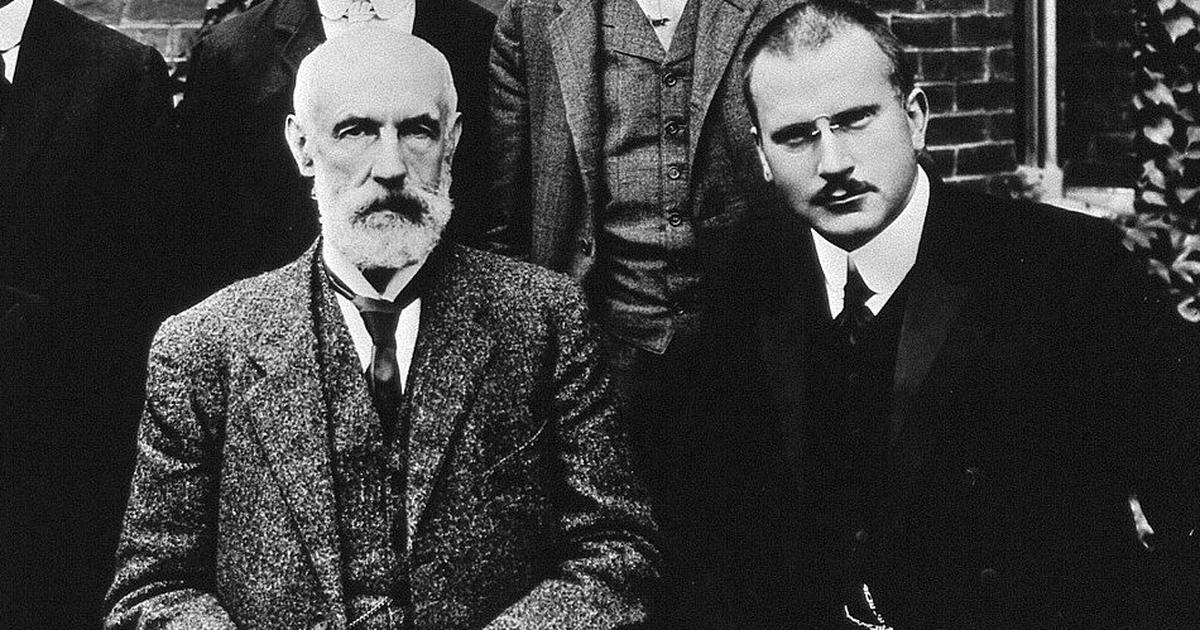This week on Paranormal 3:33, we will allow ourselves an intellectual luxury: a speculative journey. We have dissected the real evidence, the official silence, and the scientific anomalies of 3I/ATLAS with all possible rigor. But what happens when science presents us with a mystery so profound that our imagination cannot help but explore the boldest ramifications?
This post is a conscious exercise in fantasy based on the data we have, a “what if…” that explores the limits of our current understanding and the potential of the unknown. It does not seek to convince, but to provoke reflection and expand the horizons of possibility. Join us on this hypothetical flight through five scenarios that, although fantastic, are nourished by the singularities that 3I/ATLAS has already demonstrated.
1) The Unexpected Comet: A Lesson in Cosmic Humility
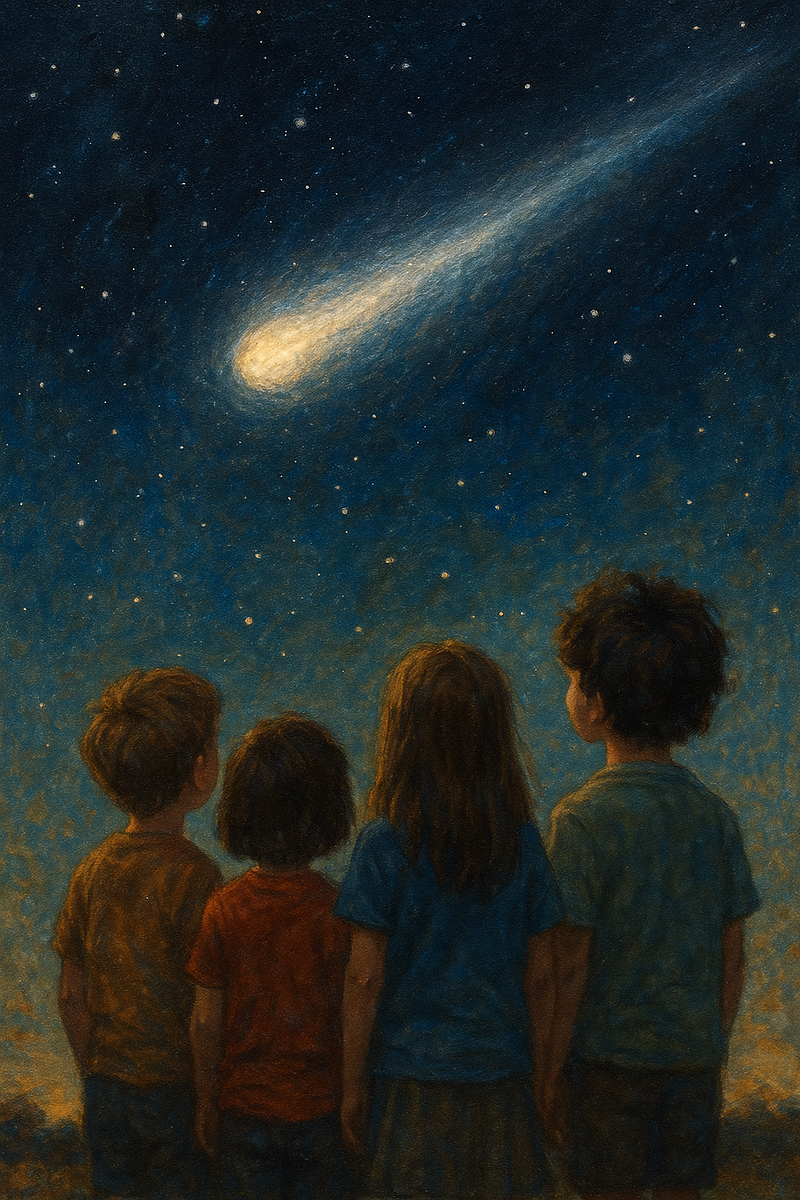
In this first scenario, the most “conservative” within the extraordinary, the global tension dissipates in a collective sigh of relief and, at the same time, of profound astonishment. The long-awaited images finally arrive. They do not show a ship, but an object of natural origin. However, what they reveal is as fascinating as it is reassuring: 3I/ATLAS is a comet, but one that defies all known rules of physics.
The data confirms every one of the anomalies that had us on edge. Its strange composition — rich in carbon dioxide, poor in water, with those inexplicable traces of iron-free nickel — becomes an irrefutable scientific fact. Its anomalous behavior — the jet pointing towards the Sun, the atypical polarization of its light, and its millimeter-precise trajectory — are not measurement errors, but the natural consequences of cosmic processes we do not yet understand.
This 3I/ATLAS is not a ship, but its study revolutionizes astrochemistry and planetary geology, opening a deep rift in our understanding of interstellar bodies. In laboratories and observatories around the world, a frantic race to understand it is unleashed. Astronomers are forced to rewrite models of cometary formation; physicists, to run simulations of orbital dynamics that would have previously seemed like fantasy. The audacity of Dr. Loeb is validated, not in his conclusion, but in his premise: we were, indeed, facing a phenomenon genuinely inexplicable by current models.
We discover that nature is far more ingenious, diverse, and strange than our arrogance allowed us to conceive; a supreme engineer capable of creating objects that mimic patterns we associate with intelligence. And in that moment of profound uncertainty, the words of the great physicist Richard Feynman resonate in every laboratory: “I would rather have questions that can’t be answered than answers that can’t be questioned.”
In the end, 3I/ATLAS would not be a ship. It would be a mirror. A cosmic mirror that forces us to recognize, with a necessary dose of humility, that we do not yet understand even half of what we think we know about the universe. And as we prepare for future visitors, that lesson becomes our best travel companion.
2) The Sentinel Probe: Echoes of the Dark Forest
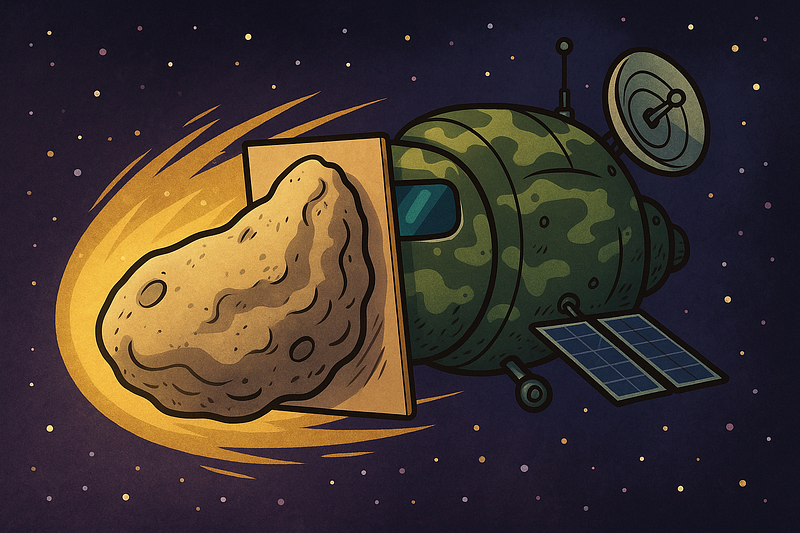
Here, our imagination ventures into darker and more philosophical territory, inspired by the Dark Forest Theory from author Liu Cixin. In a universe where survival demands silence, and every advanced civilization hides for fear of being annihilated, 3I/ATLAS would be neither a comet nor an ark. It would be something much more subtle and terrifying: a reconnaissance probe.
In this scenario, its colossal size (over 5 km in diameter), its “fine-tuned” trajectory, and its composition hinting at manufacturing, are revealed as the characteristics of an intelligent automaton designed for a single mission: to observe without being seen. True to the principles of the Dark Forest, it would travel semi-camouflaged. Its “comet-like appearance” would be the perfect cover, a cosmic mimicry to pass unnoticed as it moves through the ecliptic plane like a fish swimming among sharks.
The “anomalies” detected by Dr. Loeb and his team would not be flaws, but operational features misinterpreted by our still-primitive technology. That anomalous jet could be a cooling system or a particle collector; that nickel composition, the necessary shielding to withstand eons of interstellar travel. Its massive size would not be to harbor life, but to act as a shield, a power platform, and a container for surveillance technology that escapes our comprehension.
It seeks no contact, no conquest. It only observes. It is a passive “cosmic microphone,” recording everything. And this is where the perspective is chillingly inverted: by detecting it, we humans become — without knowing it — the very thing its civilization most feared: a noisy and unpredictable species that points telescopes, launches probes, and debates theories on television, revealing our position and technological level to whoever might be listening.
This scenario, more than terrifying, is profoundly philosophical and leaves us with questions that resonate in the silence of the cosmos:
What if the object we think we “discovered” wasn’t a signal, but a gaze? What if, by searching for answers in space, the only thing we accomplished was to reveal our presence to those who are hiding? And what if, in the great silence of the universe, we are the only ones screaming?
3) The Cosmic Ark: Fleeing the Stellar Twilight
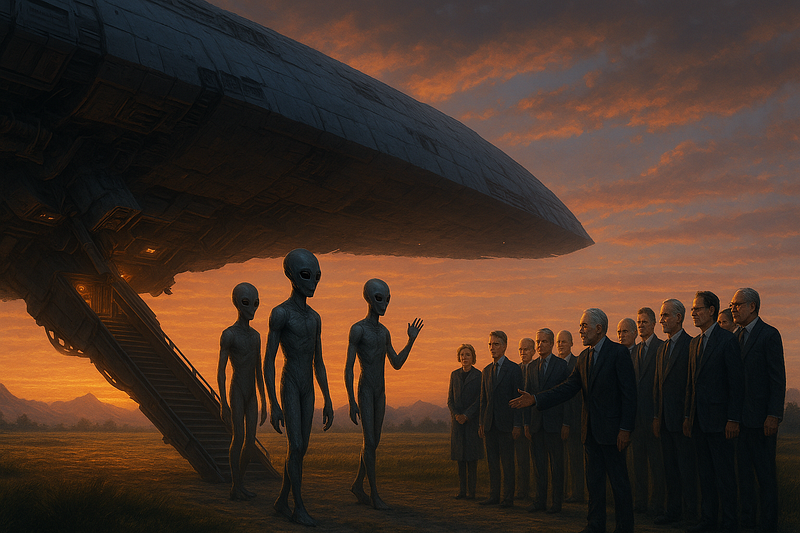
This third scenario immerses us in a science fiction epic where 3I/ATLAS is not a probe, but an Interstellar Ark. A gigantic generational ship that abandoned its home world after a stellar catastrophe, carrying the last survivors of a distant civilization across centuries or millennia in a desperate search for refuge.
In this case, the “anomalies” are not mysteries, but the scars and functions of a ship designed for ultimate survival. The “fine-tuned” trajectory is not a coincidence, but the final leg of an unimaginable journey, a cautious approach to the only habitable planet in hundreds of light-years: Earth. The anomalous jets would be its maneuvering thrusters, attempting to slow down and stabilize its orbit for a detailed observation of our world, its possible and final Eden. The strange iron-free nickel composition would be the signature of an advanced technology that recycled every last gram of its destroyed planet to forge this flying fortress.
But is it feasible? Dr. Avi Loeb and others have calculated that the object is several kilometers in diameter. Let’s do a rigorous thought experiment: if we assume a shape of 5 km long by 1.5 km wide and only 0.001% of its internal volume were allocated to pressurized habitats, the available space could house from 300,000 to 500,000 intelligent organisms, a true miniature interstellar city. A cosmic Noah’s Ark.
Perhaps we haven’t been observing a rock, but a seed: a capsule holding the last voices, the last culture, the last hope of a civilization that refused to die.
If this were true, the “countdown” of 3I/ATLAS would not be ours, but theirs. And the ultimate question would not be what they are, but who we are. How would we react to refugees from the stars? With fear of the unknown or with the empathy of a species that also looks to the sky? Cosmic diplomacy would become the final test of our humanity.
Because, deep down, and this is the most overwhelming idea, every advanced species eventually looks to the stars with the same hope: to escape its own end.
4) The Invader Fleet: The Stormbringer
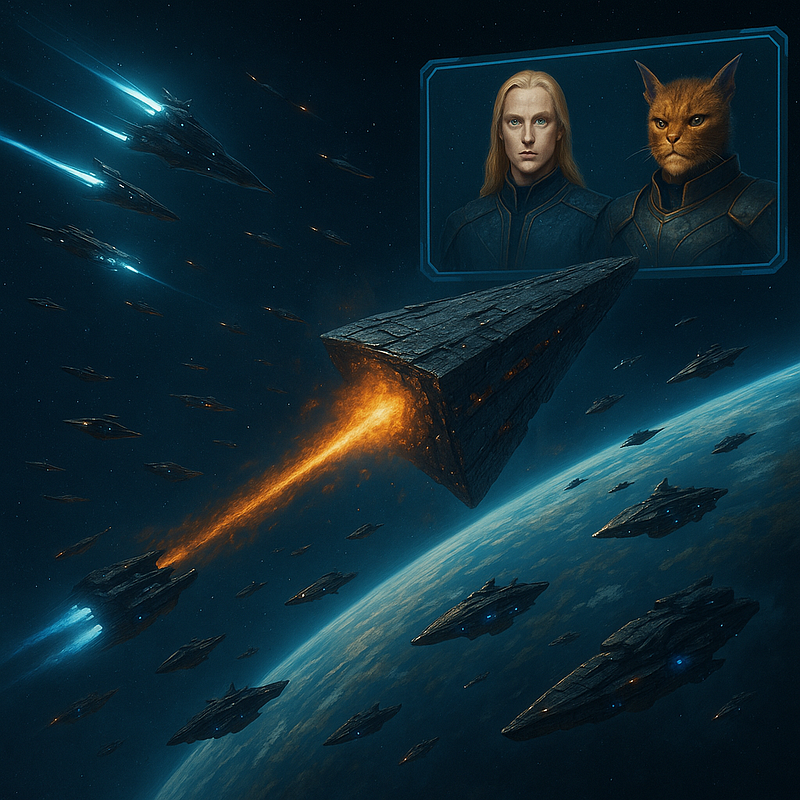
Finally, speculation pushes us to the frontier of myth and nightmare. In this fourth scenario, 3I/ATLAS is not a peaceful probe or an ark of refugees. It is a vanguard ship, an interstellar battering ram, the first piece of a hostile fleet belonging to a nomadic civilization that moves from system to system, draining resources and exterminating life forms it considers competition.
Here, the anomalies are revealed as the capabilities of a star destroyer: the anomalous jet is an offensive propulsion system or a directed energy weapon; the iron-free nickel composition is the impenetrable armor of a war technology that surpasses ours by millennia.
Faced with such an absolute threat, what would humanity do? The most terrifying question is whether we would have time to do anything at all.
- The Human Fracture: Before any defense, we would likely fragment. The world would split between denialists decrying hysteria, factions trying to communicate, and leaders preparing a military response. Panic would be the first weapon the enemy would use against us, without firing a single shot.
- The Futility of War: Our “Kardashev Scale” level is below Type 1. We have barely begun to use the energy of our own planet. How could we face a Type II or III civilization, capable of building and moving an object like 3I/ATLAS? Would our nuclear weapons, our greatest pride and terror, be anything more than fireworks against their armor? Our defense, limited to a blue level 0.7 planet, would be, at best, a heroic gesture in the immensity.
- Myths Made Real: And here, on the edge of the abyss, the imagination runs wild into the deepest territory of Paranormal 3:33, where speculation borders on modern mythology. Before an existential threat, the legends whispered in esoteric and ufological circles would take on a terrifying urgency. We speak of the Pleiadians, Sirians, and Lyrans, those supposed humanoid races of Nordic appearance, often described in tradition as our “star ancestors” or cosmic “elder brothers.” For decades, they have been spoken of as silent watchers, spiritual guides who are said to have seeded life on Earth and have watched over our development from the shadows. With the arrival of the “Stormbringer,” would their legendary protection materialize? Or would we discover they were only an echo of our own desires to have guardians in the vast darkness? This question leads us to an even more complex concept, popularized by science fiction and adopted by ufology: the existence of a “Galactic Federation.” A supposed alliance of advanced civilizations governed by a sacred directive of non-interference, a law that forbids them from intervening in the natural development of “lesser” civilizations like our own. The dilemma would be of cosmic proportions: faced with a threat of total extermination, would they dare to break their own law to save us, perhaps unleashing a war on a scale that would make our annihilation a lesser evil? Perhaps their deliberation would be our sentence. They would watch us fall, considering us a “disposable pawn” in a stellar chess game whose rules we do not understand. In this scenario, the arrival of 3I/ATLAS would not just be an invasion; it would be the revelation that the cosmos is full of ancient powers, incomprehensible politics, and cold galactic laws. We would cease to be the protagonists of our own story to become, tragically, the battlefield of others.
Perhaps, however, there would be no war. Perhaps defeat would simply be not understanding what we face. Because for a civilization that operates on scales of millions of years, our entire existence is a blink of an eye. Our annihilation would not be an act of evil, but a clerical task, like clearing land to build something new.
5) The Silent Scenario: The Cosmic Butterfly Effect

Finally, there is a fifth scenario, perhaps the most plausible and, in its subtlety, one of the most disturbing. It is a less cinematic possibility, devoid of ships and crews, but laden with a fundamental truth of the universe: nothing passes through a system as delicate as ours without leaving a trace.
In this case, 3I/ATLAS is none of the above. It is not a comet, a probe, an ark, or a weapon. But its simple passage, its mass of 33 billion tons traveling at a dizzying speed, alters something fundamental yet invisible. Its immense gravitational field, like the wake of an invisible ship, disturbs the fragile stability of the far reaches of our solar system. A slight gravitational tug on the Kuiper Belt or the Oort Cloud is enough to divert the orbit of a handful of dormant comets, pushing them onto a new trajectory that, in 50, 100, or 500 years, will set them on a collision course with the inner solar system.
In this scenario, there would be no contact, no war, no miracle. Only cosmic causality.
The object would pass, humanity would breathe a sigh of relief believing the mystery was over, and the true consequence would lie dormant, like a time bomb with a centuries-long timer. By the time the effects manifest — perhaps in the form of an unprecedented meteor shower or a change in the orbital resonance of some planet — no one would connect the catastrophe to that strange visitor that fascinated us in 2025.
This is the reminder that every visitor leaves a mark, even if it is invisible to the human eye. And that the universe does not need to be hostile to be dangerous; it only needs to be indifferent to our existence.
Epilogue: Between Science and Imagination
This text, as stated from the beginning, has been an imaginative exercise. A laboratory of possibilities where we have dared to think aloud, not to convince, but to explore. Because what ultimately happens with 3I/ATLAS — be it a comet, a probe, an ark, or simply a silent disturbance — will inevitably mark a milestone for humanity.
The real test is not what the object is, but how we react to the mirror of the unknown. And it is here that the reflection becomes more intimate and sentimental. Are we really prepared for any of these scenarios?
Honesty compels us to be humble. According to the Kardashev Scale, we have not even reached Level 1. This is not just a scientific label; it is the diagnosis of our species. It means that we are a civilization in its cosmic infancy, not yet mastering the energy of our own planet, much less the full consciousness of our fragile position in the universe. We remain mired in disputes over borders and finite resources, while a galaxy of incomprehensible possibilities and dangers operates around us.
Our vulnerability is not only technological, but emotional and social. Are we ready for the humility of discovering that nature is stranger than we think? Are we ready for the silence of a probe that ignores us? Do we have the maturity to welcome refugees from the stars? Or the unity to face a threat? The answer, painfully, seems to be no.
Perhaps, then, 3I/ATLAS is not coming to show us who “they” are, but to remind us of who we are at this precise moment in our history. And what we see is a curious species, often fearful and divided, but with one redeeming quality: we are able to imagine.
That capacity to imagine — and, therefore, to transcend — is our only map to the next evolutionary step. What the future holds, if we do not take that step, is the repetition of our own mistakes until there is no turning back.
The true wonder, therefore, lies not in the answers this visitor might bring, but in the audacity it inspires in us to keep asking, to keep imagining a better future, and perhaps, to begin to build it.
About the Author
For more than five years, Alberto Cardenas has traveled to the epicenter where myth and reality meet. As a UFO and paranormal phenomenon researcher, and a collaborator with the Paranormal & UFO Research Center RGV, his work consists not only of seeking evidence but of narrating the stories that arise from the inexplicable.
Through his own platform, Paranormal 3:33, he intertwines field investigation, popular culture, and critical analysis. The result is stories that captivate both those who seek to believe and those who need to doubt, demonstrating that a good story transcends all barriers.
For Alberto, myths are not simple anecdotes, but windows into the deepest parts of the human condition. His work does not chase definitive answers, but something much more valuable: keeping the question alive. Because it is in the exploration of the unknown that we often find ourselves the most.
Contact
Do you have a story to tell, want to share a reflection on this article, or start a collaboration? Your perspective is valuable. You can write to us at:
alberto@paranormal333.com
alberto@paranormalrgv.com
Regarding the Reproduction of this Text
We greatly appreciate your interest in sharing and discussing the ideas presented in this article. All content in this publication is the intellectual property of the author.
If you wish to cite, reproduce, or distribute this material, either in part or in its entirety, in any digital or printed medium, we kindly ask that you get in touch via the provided email addresses to request the corresponding authorization. We are excited by the idea of these explorations reaching more people and would be delighted to discuss it.

